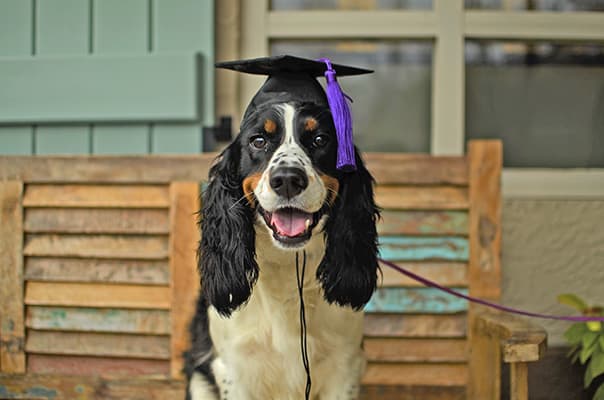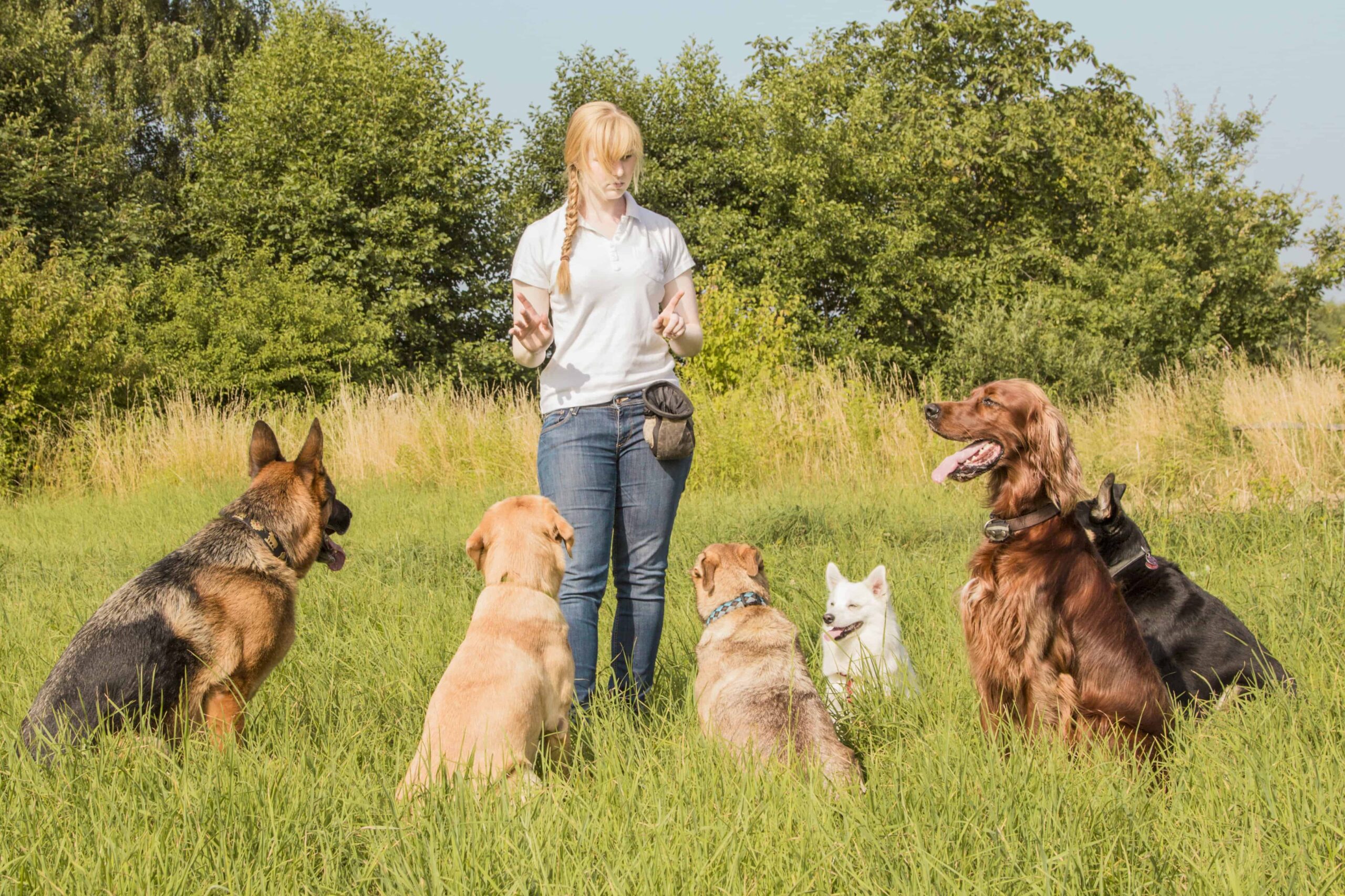Enjoyable Tasks to Enhance Your Dog Training Experience
Enjoyable Tasks to Enhance Your Dog Training Experience
Blog Article
Important Tips for Effective Dog Training: A Guide for Pet Dog Owners
Efficient canine training is a diverse procedure that calls for a critical strategy customized to both the animal's character and the owner's goals. Understanding exactly how to browse these obstacles can dramatically improve the training experience, eventually changing the relationship between owner and pet.
Comprehending Dog Habits
Understanding canine actions is necessary for reliable training and cultivating a harmonious connection in between pooches and their proprietors. Pet dogs interact mostly through body language, vocalizations, and activities, making it essential for owners to interpret these signals accurately. Acknowledging a pet's stance, tail setting, and ear alignment can offer understandings into its emotion. A wagging tail does not constantly suggest joy; it can also signify exhilaration or anxiety.
Socialization plays a significant role in pet dog behavior; exposure to various environments, individuals, and various other animals can considerably impact a canine's temperament. Moreover, factors such as breed characteristics and specific personality ought to lead training techniques, as some breeds might have particular behavioral characteristics that demand tailored methods. By recognizing these aspects, proprietors can create an encouraging environment that urges positive behavior, leading to effective training outcomes and a much deeper bond with their pet dogs.
Developing Constant Commands
Effective interaction with your dog begins with establishing consistent commands. This foundational component of training is crucial for fostering understanding between you and your pet. Consistency in the commands you use makes certain that your pet dog can reliably connect details words or expressions with the wanted habits.
When selecting commands, select clear, distinct words that are simple to separate and state from each other. Stay clear of using similar-sounding commands that might confuse your pet. Using "sit" and "stay" is appropriate, however "sit" and "hit" might lead to misunderstandings.
In addition, keep the same tone and volume for each and every command. Pets are delicate to vocal signs, so varying your tone can create complication.
It is similarly crucial to guarantee that all member of the family get on the very same page pertaining to the commands used. A united front in command use will certainly avoid mixed signals and reinforce the discovering procedure.
Favorable Support Methods
The power of favorable support in canine training depends on its capacity to motivate preferred habits with benefits and appreciation. This technique is based in the concept that behaviors adhered to by beneficial outcomes are more probable to be duplicated. By including positive support into your training routine, you can efficiently form your pet's behavior in a constructive fashion.
To apply positive support, it's crucial to determine what inspires your dog, whether it be deals with, toys, or spoken praise. When your canine performs a wanted activity, such as remaining on command, instantly compensate them with a reward or affection. This organization between the command and the favorable outcome enhances their understanding.
It's essential to timing the benefits properly; delivering the support within seconds of the desired habits helps your pet make the connection (dog training). Additionally, uniformity is vital-- guarantee that all relative use the exact same commands and reward systems to avoid confusion

Gradually, you can decrease the frequency of treats as your dog finds out the habits, transitioning to applaud or periodic incentives. This approach not just fosters a strong bond between you and your canine yet also promotes more helpful hints a positive knowing setting, making training a satisfying experience for both.
Socialization and Communication
Constantly exposing your canine to a selection of environments, individuals, and other animals is important for their social advancement. Socializing needs to start early, preferably during the critical home window of 3 to 14 weeks, when pups are most responsive to new experiences. Nonetheless, older canines can also profit from ongoing socializing efforts.
Present your pet dog to different setups, such as parks, pet-friendly shops, and urban locations. This exposure aids them adjust to different stimuli, minimizing anxiousness and concern feedbacks. Urge favorable interactions with other pet dogs and people, guaranteeing that these experiences are safe and controlled to foster confidence.
Utilize organized playdates with well-mannered pets, as this can improve your dog's social skills and show them ideal behavior. Obedience courses and training sessions additionally supply excellent chances for socializing, enabling your pet dog to interact with others in a monitored setting.
Monitor your pet's body language throughout interactions, as this will certainly assist you evaluate their comfort degree. Gradually enhance exposure to more tough scenarios while guaranteeing that each experience declares. A well-socialized pet is more probable to display balanced actions, making them a joy to have in any kind of setup.
Attending To Typical Training Difficulties
Every pet dog proprietor will certainly encounter training obstacles at some point, no matter their pet's age or socializing degree. Identifying typical concerns such as stubbornness, interruptions, and terror can aid in creating efficient techniques for enhancement.

Slowly introduce disturbances as the pet comes to be a lot more competent in commands. Short, regular training sessions are also reliable in preserving interest.
Terror can prevent a dog's knowing procedure. Gradual desensitization to the resource of fear, combined with favorable reinforcement, can assist alleviate anxiousness. Patience is important; never ever compel a pet right into a circumstance that causes distress, as this might aggravate the concern.
Eventually, understanding and attending to these typical obstacles with an organized strategy will cultivate an extra productive training experience, strengthening the bond between pet dog and proprietor while advertising reliable understanding.
Verdict
In recap, successful pet dog training depends on a comprehensive understanding of canine habits, the establishment of constant commands, and the application of favorable support techniques. Socializing plays a Read Full Article crucial duty in developing well-adjusted pets, while resolving usual training challenges needs perseverance and flexibility. By applying these crucial strategies, animal proprietors can promote a strong bond with their pet dogs and advertise desirable actions, inevitably causing learn this here now an unified connection in between people and their canine companions.
Comprehending pet dog actions is crucial for reliable training and promoting a harmonious partnership between dogs and their owners.Socialization plays a significant function in dog behavior; exposure to different environments, people, and other pets can significantly influence a canine's personality.The power of positive reinforcement in dog training lies in its capability to urge preferred habits with rewards and appreciation. By including positive support right into your training routine, you can efficiently shape your canine's habits in a useful fashion.
In summary, successful pet training relies on a comprehensive understanding of canine actions, the establishment of regular commands, and the application of favorable reinforcement strategies.
Report this page